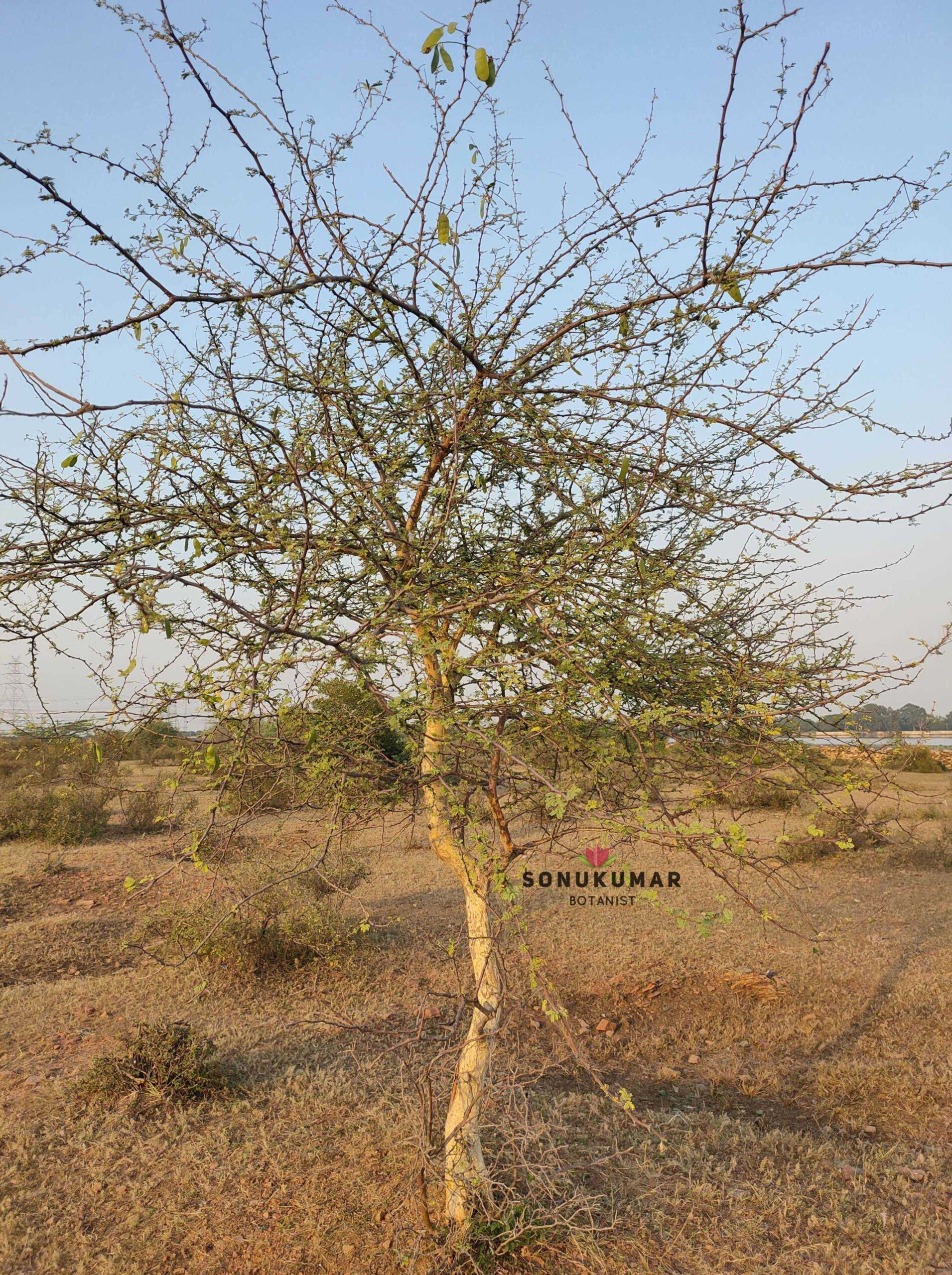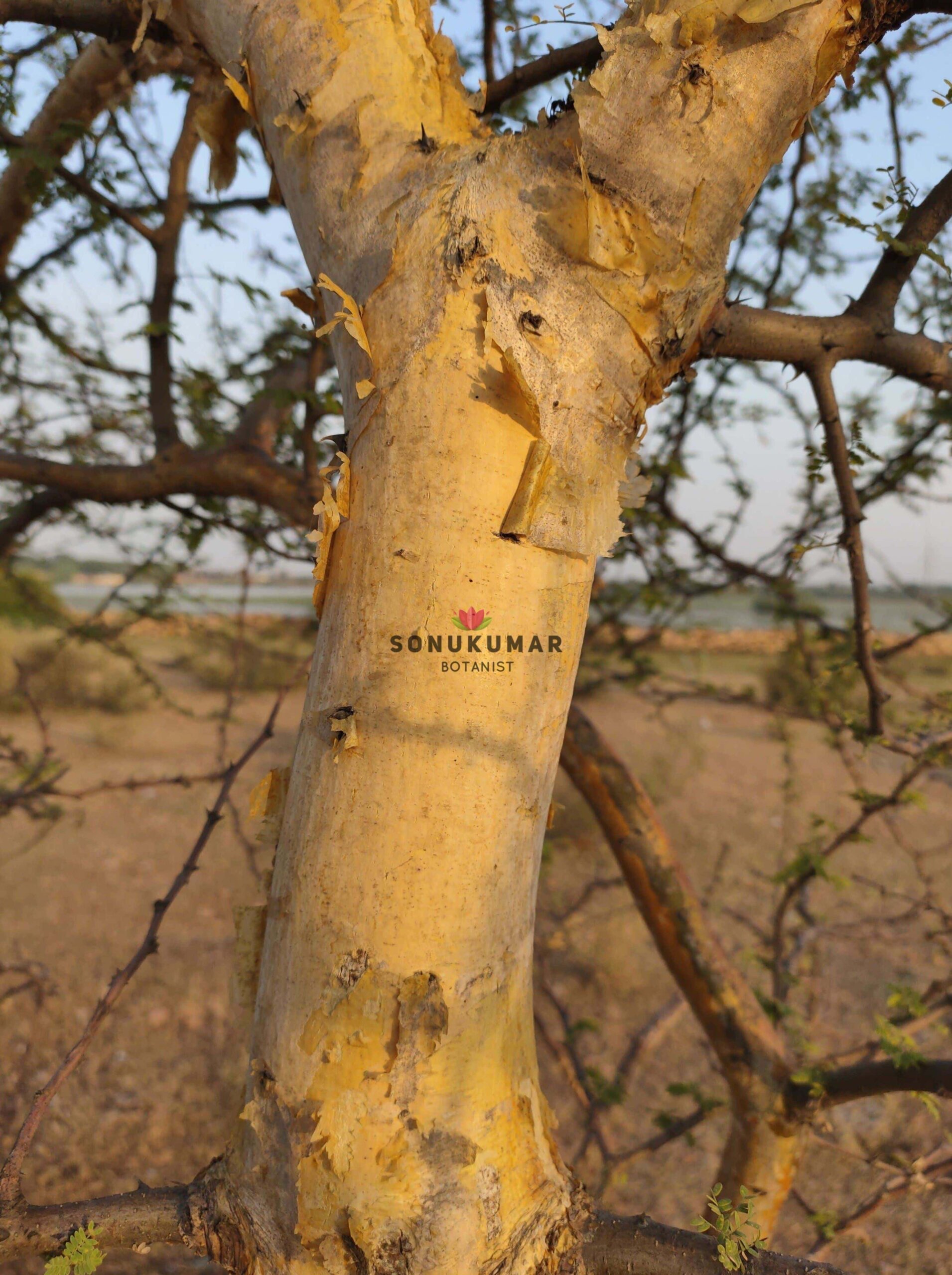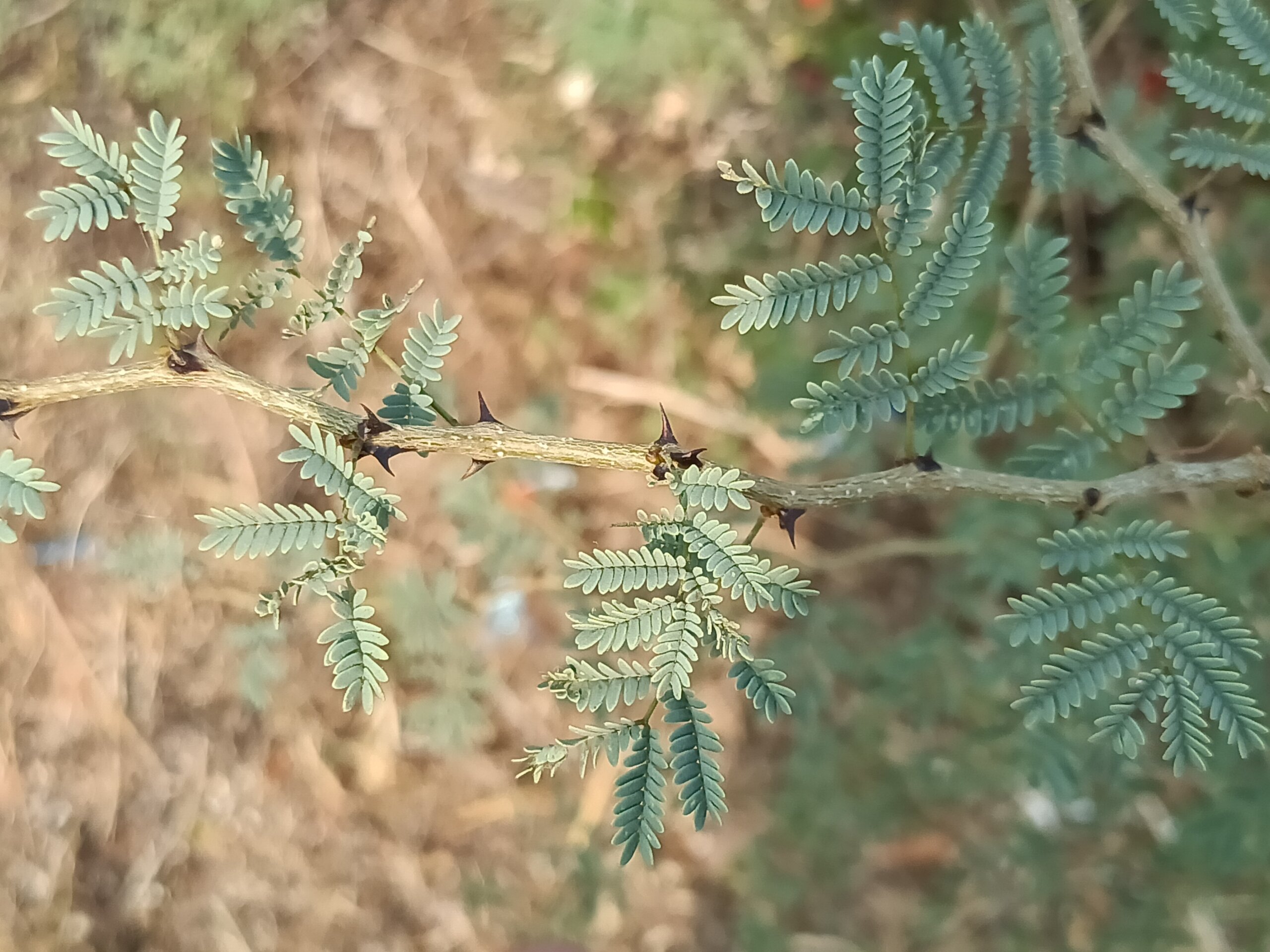- Kumtha
- Acacia senegal L., Mimosa senegal L.
- Borabas kota
- Naturally grown
-
A low branching shrub or small tree to 7 m high (maximum 15 m). The tree flowers during the rainy season and loses its leaves during the dry season. When water is only available at great depth, deeply penetrating tap roots can develop, and the tree will grow considerably larger than normal.
The bark of Acacia senegal is yellow to brown and smooth in young trees, becoming dark grey, gnarled and cracked on older trees. It is armed with recurved prickles just below the nodes, in pairs or in groups of three.The leaves are 3.5 to 8 cm long, with 3 to 8 pairs of pinnae. The rachis (main stem of the compound leaf) sometimes bears prickles. The pinnae are 1.5 to 2.5 cm long with 5 to 25 pairs of leaflets per pinna. The leaflets are 1 to 9 mm long, 0.5 to 3 mm wide, elongated-oval shape, sparsely hairy or smooth on both surfaces.The flowers are borne on spikes 3 to 8.5 cm long.
The hairy fruits are yellow-brown, flat and papery, 1.8 to 9 cm long, 1.2 to 3.4 cm wide, 2 mm thick and open on maturity to discharge the seeds.
Source:powo -

S. senegal habitat image
PC: Sonu Kumar
A small tree, crooked, thorny tree 4-7m tall, with an open crown & smooth, yellowish bark. -

S senegal Bark image
PC: Sonu Kumar
Bark greenish grey, peeling in characteristic papery flakes to reveal new yellow

Senegalia senegal (L.) Britton
Plant Phenological Events
| Month | Phenological Events | |
|---|---|---|
| No events found. | ||
Systematic position | |
|---|---|
| Division | Angiosperm |
| Class | Dicotyledons |
| Sub-Class | Polypetalae |
| Series | Calyciflorae |
| Ord | Rosales |
| Family | Fabaceae |
| Species | Senegalia senegal (L.) Britton |
Family mimosaeae?